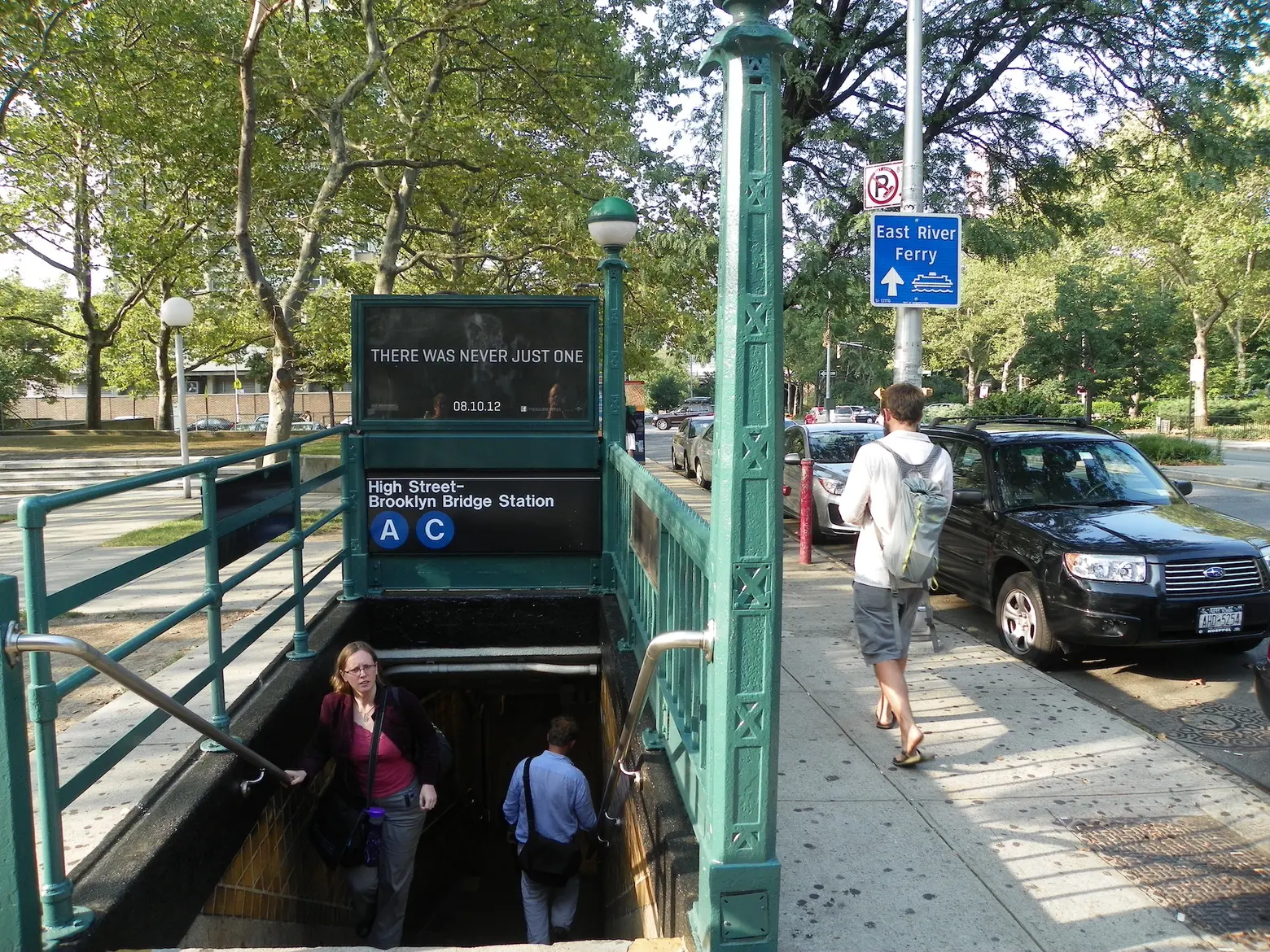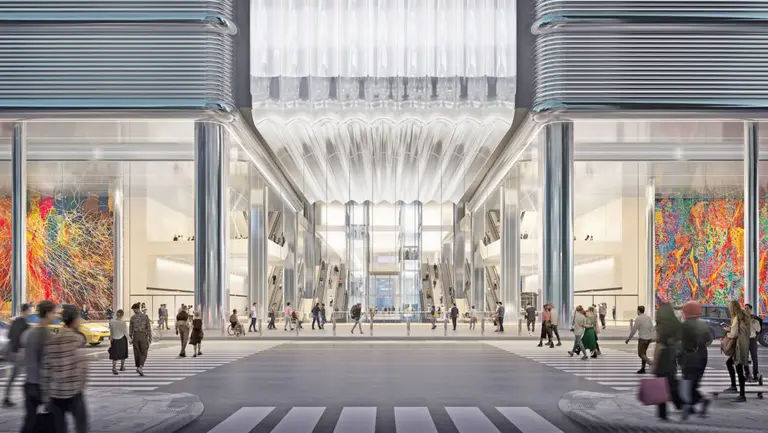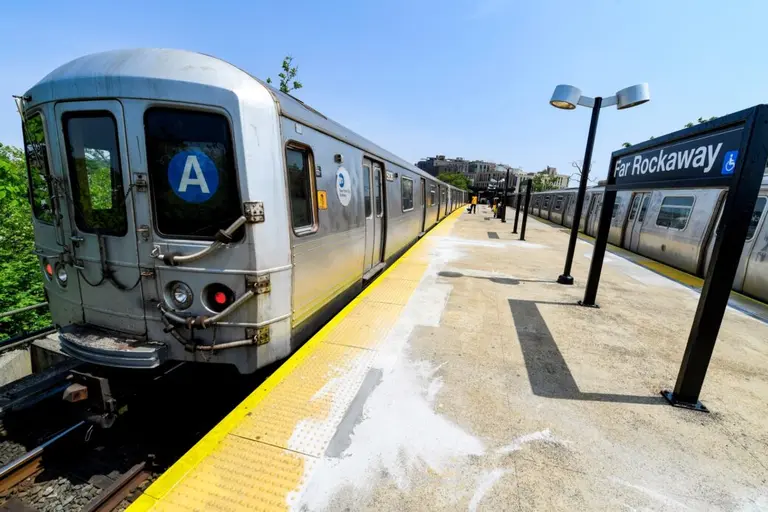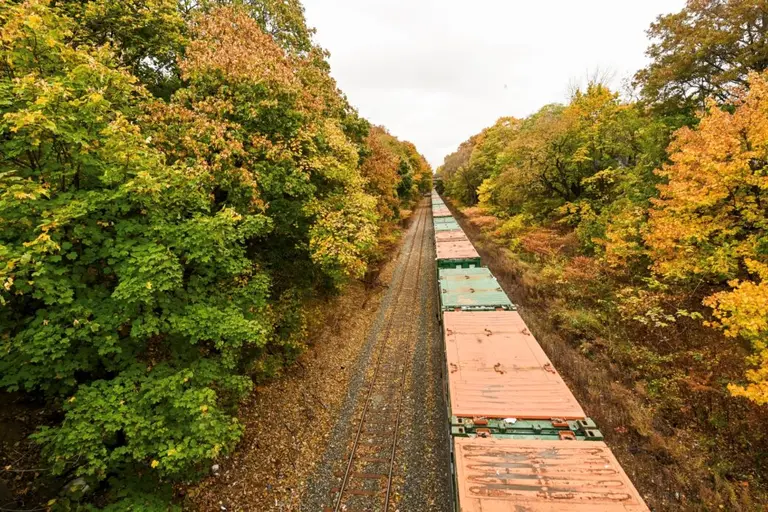NYC subway stations near rivers have worst air quality in the system

Photo of High Street station entrance by The All-Nite Images on Flickr
New York City subway stations that lie beneath the city’s rivers may expose commuters to higher levels of harmful pollutants compared to other stations, according to a study published this month. Known as the “river-tunnel” effect by researchers, tunnels that are beneath water have limited ventilation, which ends up trapping harmful particles, according to scientists from New York University’s Grossman School of Medicine. According to the research, stations neighboring river tunnels had 80 to 130 percent higher concentrations of potentially dangerous particles compared to stations only a few stops away.
In a prior investigation by the NYU Grossman School of Medicine, researchers found varying levels of air pollution at different subway stations. While some had air pollutant levels at rates a few times higher than regular air, some had pollutant levels that were similar to breathing in the air after a forest fire.
According to a newer study, researchers measured the air quality at 54 NYC subway stations during rush hour and found that stations adjacent to river tunnels had 80 to 130 percent higher concentrations of hazardous particles compared to stations just a few stops down the line.
“Our findings help explain why some underground subway stations are more polluted than others,” David Luglio, M.S., a doctoral student at NYU Grossman School of Medicine and lead author of the study, said. “Those subway stations closest to rivers clearly must be prioritized during cleaning efforts.”
The study showed eight of the 10 most polluted stations were river-tunnel stations, including Brooklyn stations at High Street, York Street, and Borough Hall and Manhattan stations like Fulton Street, Lexington Avenue-59th Street, and Lexington Avenue-53rd Street. Christopher Street PATH station was also ranked by the research as among the most polluted stations.
According to Luglio, stations located below rivers have worse ventilation compared to others, which results in more harmful particles being trapped below the surface and building up over time. As trains pass by, these particles are kicked up and travel out of the river tunnels and into the nearby subway stations. The station’s proximity to river tunnels was the strongest factor in determining its pollution levels, followed by the station’s age.
The confirm the study’s findings, researchers measured the particle build-up on the B line, which instead of crossing the East River underground, crosses on a bridge. The level of pollutants on stations adjacent to the river had lower levels of harmful particles than others down the line in either direction.
The study’s results showed that according to more than 100 air samples collected between February and March 2022, pollutant levels in all of the measured stations exceeded the daily exposure limit set by the United States Environmental Protection Agency. Experts have stated that taking in more than the EPA’s daily limit can lead to lung and heart diseases, and an overall higher risk of death.
“Now that our results have identified key contributors to poor air quality in New York City’s underground subway stations, we have a better idea of where to improve conditions in the most contaminated areas of the transit system,” says study senior author Terry Gordon, Ph.D., a professor in NYC Langone Health’s Department of Medicine and the study’s senior author, said.
“Increasing ventilation and scrubbing the tunnel walls and floors to remove continually recycling debris may make stations safer for riders and transit workers.”
In a statement to amNY, Metropolitan Transportation Authority spokesperson Michael Cortez questioned the study’s methodology.
“This study tested a hypothesis by only taking samples for short periods, at the most active time of day, which is not an accurate comparison to EPA standards for daily exposure limits,” Cortez said. “We have conducted previous air quality testing in the subway system and found no health risks, however, we will thoroughly review this study as the safety of customers and employees is always our highest priority.”
RELATED:




























